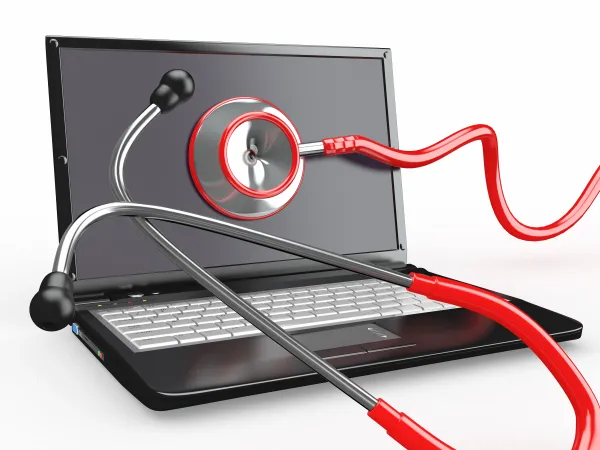Part B Insider (Multispecialty) Coding Alert
Watch Your Incident-To Claims When Your Physician Is Out of Office

With doctors on vacation, holiday, or summer sabbatical, juggling clinical care can be a hassle, and it’s easy to forget to adjust your billing habits. Unfortunately, some practices continue to bill incident-to even when the doctor is out of town—and that’s a violation.
Billing a service incident-to requires you to follow well-defined regulations, and it is important to keep in mind that not all services will qualify. Income is lost every time you miss a service that qualifies for incident-to; moreover, you invite trouble every time you bill one that does not.
Here’s a Quick Refresher Course
Framework. Medicare defines incident-to-billing as the allowance of physician practices to bill for services personally provided by Non-physician practitioners (NPPs) when a supervising physician is nearby. The staff provides services under the name and National Provider Identifier (NPI) of the supervising physician.
Who are NPPs? Non-physician practitioners (NPPs) are also known as mid-level providers (MLPs) or Advanced Practice Providers (APPs). When any qualified NPP performs a service, the practice can claim incident-to with the proper documentation and under the aforementioned circumstances. Each MAC differentiates who can and cannot give incident-to care, so it is a good idea to check their NPP lists. Here are some examples on providers that can be covered, depending on state law and scope of practice:
-
Physician Assistant (PA)
-
Nurse Practitioner (NP)
-
Certified Nursing Specialist (CNS)
-
Certified Nurse Midwife (CNM)
-
Physical Therapist (PT)
-
Occupational Therapist (OT)
-
Clinical Psychologist
-
Clinical Social Worker
What can an NPP do? According to the Medicare Internet-Only-Manual (IOM), incident-to care from NPPs includes more than taking just administrative information and vitals, “but also [includes] services ordinarily performed by the physician such as minor surgery, setting casts or simple fractures, reading x-rays, and other activities that involve evaluation or treatment of a patient’s condition.”
Here’s the Rub
Since it’s become commonplace to see report after report from the OIG highlighting the myriad of medical practices across specialty lines incorrectly billing incident-to, you’d think that it would be easy to bill with all the advisory opinions in black and white—but, it’s not, and that’s the problem. If the documentation and the circumstances aren’t on the up-and-up, the claim is going to be denied.
Direct Supervision. Under incident-to rules, the physician is in charge of the patient, and the non-physician practitioner is acting as a physician extender as opposed to acting under their own license, said WPS Medicare’s Ellen Berra during the MAC’s 2015 “Incident to and Shared/Split Services Question and Answer Teleconference.” The services must be provided under direct supervision and the physician should be immediately available should the need arrives, meaning the supervising physician is in the office suite, or “within speaking loudly distance,” she said. “Not within ‘shouting distance,’ not just available by telephone or by walkie talkie, not on a different floor—but really within that designated office space.”
Relationship requirements. The person providing the incident-to services must have an employment relationship either with the physician or with the group that employs the physician, Berra added. “It can be a direct employee, a leased employee, a contracted employee—but it does have to have that relationship with the entity that’s employing the physician or be employed by the physician himself,” she said.
Shared/Split billing is different. Unfortunately, the shared/split billing category is a very confusing one in relation to understanding incident-to, and an area of concern for billers because practices often improperly code this or lack both the supervising physician’s and NPP’s medical notes, showing both providers were part of the visit. Detailed documentation is essential to avoid a denied claim and loss of payment.
“Shared/split billing is for services provided in any location when both the physician and a non-physician practitioner (NPP) provide, document, and sign the work they each performed,” the WPS Medicare website explains. “There must be a face-to-face encounter with both the physician and NPP. The physician can bill the service to Medicare.”
Take a Look at these Examples
To get a firm handle on incident-to billing, consider these examples of real-life medical practice situations.
Question one: If the doctor is on vacation, but we have her on the phone, can the PA bill incident-to?
Answer: No, the PA will need to bill the service under his NPI number. The supervising physician must be in the office and within earshot for you to report incident-to.
Question two: We have lots of new patients at our practice, and it is extremely busy, especially in the summer. When our NP sees patients for the first time, can she bill incident-to?
Answer: No, she cannot because only a physician can establish a plan of care from the initial visit for a new patient. The NP would have to bill under her own NPI. But, if new issues present themselves and the physician sees the patient in subsequent visits, then the NP can bill incident-to for subsequent care.
Question three: Our supervising physician and NP go in and out during E/M visits. What is the protocol on signatures and notes?
Answer: Oftentimes, one of the providers starts the visit, and the other finishes the exam. In order for your practice to claim shared/split billing, documentation from both the physician and the NP must be legible and present, and both providers have to sign the orders. If this is not evident, you cannot bill shared/split.
Final note. If the visit meets the incident-to criteria, the NPP can bill under the supervising physician’s NPI, which will net the practice 100 percent of the fee. If the same visit is billed with the NPP’s NPI, you’ll only receive 85 percent reimbursement for the same service.
Resource: For a more thorough review the most recent IOM on Incident-to and NPPs, visit https://www.cms.gov/Regulations-and-Guidance/Guidance/Manuals/Downloads/bp102c15.pdf.
Related Articles
Part B Insider (Multispecialty) Coding Alert
- Affordable Care Act:
New PACE Update Focuses On Flexibility and Stability for Seniors
ACA implementations to PACE encourage embracing new technologies to protect the aging. Your Medicare patients [...] - Incident-To:
Watch Your Incident-To Claims When Your Physician Is Out of Office
Take a look at these points to refresh your staff on how to properly bill [...] - Reader Questions:
Know the Differences Between PT and Chiropractic Services to Avoid Denials
When referring patients to a chiropractor, make sure you understand what CMS covers. Question: In my [...] - Part B Coding Coach:
Don't Let Trach Tube Procedure Claims Get You Down
Expert advice on global days and bundling rules to ensure your trach tube claims are [...] - Physician Notes:
Couple Gets Prison Time for Masquerading as Physicians in Portable X-ray Scam
Plus: CMS Releases 2014 Part D Drug Data The use of portable imaging has skyrocketed [...]




